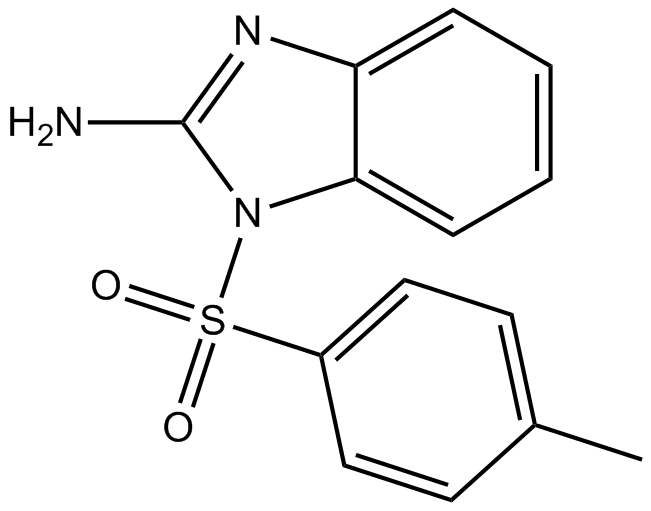ML130 (Nodinitib-1) (Synonyms: CID1088438, ML130) |
| Catalog No.GC16641 |
ML130 (Nodinitib-1) (ML130;CID-1088438) is a NOD1 inhibitor with an IC50 of 0.56 μM.
Products are for research use only. Not for human use. We do not sell to patients.

Cas No.: 799264-47-4
Sample solution is provided at 25 µL, 10mM.
Nodinitib-1 (ML130;CID-1088438) is a NOD1 inhibitor with an IC50 of 0.56 μM.
Nodinitib-1 selectively inhibits IL-8 production induced by NOD1 ligand. Nodinitib-1 also inhibits γ-tri-DAP-induced expression of the prototypical NF-κB target gene IκBα at the mRNA level. Nodinitib-1 inhibits γ-tri-DAP-dependent activation of NF-κB (IκBα phosphorylation and degradation) and MAPK (p38 phosphorylation) signalings, without affecting Akt survival pathway. Nodinitib-1 selectively inhibits responses of primary dendritic cells to NOD1 ligand. Nodinitib-1 reduces cell surface expression of co-stimulatory molecules CD83, CD86 and HLA-DR and also inhibits expression of IL-1β, IL-6 and TNFα elicited by γ-tri-DAP (but not by LPS), without causing cytoxicity[1]. Nodinitib-1 is identified as NOD1-selective molecules from an HTS campaign involving ~290,000 compounds. Nodinitib-1 inhibits γ-tri-DAP-stimulated luciferase production in HEK 293T cells, which has endogenous NOD1 levels at submicromolar concentration as determined in a NF-κB-linked reporter assay[2].
References:
[1]. Correa RG, et al. Discovery and characterization of 2-aminobenzimidazole derivatives as selective NOD1 inhibitors. Chem Biol. 2011 Jul 29;18(7):825-32.
[2]. Hershberger PM, et al. Synthesis and physicochemical characterization of novel phenotypic probes targeting the nuclear factor-kappa B signaling pathway. Beilstein J Org Chem. 2013 May 8;9:900-7.
Average Rating: 5 (Based on Reviews and 18 reference(s) in Google Scholar.)
GLPBIO products are for RESEARCH USE ONLY. Please make sure your review or question is research based.
Required fields are marked with *




















